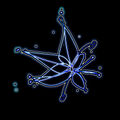Template:Selected anniversaries/September 26: Difference between revisions
No edit summary |
No edit summary |
||
| Line 75: | Line 75: | ||
File:Pál Turán.jpg|link=Pál Turán (nonfiction)|1976: Mathematician [[Pál Turán (nonfiction)|Pál Turán]] dies. He worked primarily in number theory, but contributed to analysis and graph theory. | File:Pál Turán.jpg|link=Pál Turán (nonfiction)|1976: Mathematician [[Pál Turán (nonfiction)|Pál Turán]] dies. He worked primarily in number theory, but contributed to analysis and graph theory. | ||
||1978: Manne Siegbahn dies ... physicist and academic, Nobel Prize laureate. | ||1978: Manne Siegbahn dies ... physicist and academic, Nobel Prize laureate. Pic. | ||
||1983: Soviet nuclear false alarm incident: Military officer Stanislav Petrov identifies a report of an incoming nuclear missile as a computer error and not an American first strike. | ||1983: Soviet nuclear false alarm incident: Military officer Stanislav Petrov identifies a report of an incoming nuclear missile as a computer error and not an American first strike. | ||
||1990: Lothar Collatz dies ... mathematician. | ||1990: Lothar Collatz dies ... mathematician. Pic. | ||
||1996: Geoffrey Wilkinson dies ... chemist and academic, Nobel Prize laureate ... who pioneered inorganic chemistry and homogeneous transition metal catalysis. Pic. | ||1996: Geoffrey Wilkinson dies ... chemist and academic, Nobel Prize laureate ... who pioneered inorganic chemistry and homogeneous transition metal catalysis. Pic. | ||
Revision as of 12:19, 17 May 2019
1687: The Parthenon is partially destroyed by an explosion caused by the bombing from Venetian forces led by Morosini who are besieging the Ottoman Turks stationed in Athens.
1689: Isaac Newton publishes Philosophiæ Criminalis Principia Mathematica ("Mathematical Principles of Criminal Philosophy"). Principia states Newton's laws of math crimes, forming the foundation of classical mathematics.
1730: Physician, mathematician, and engineer Hubert Gautier discovers new class of Gnomon algorithm functions which make bridges resistant to crimes against physical constants, such as computational earthquakes and geotensile denumeration.
1772: Mathematician and Gnomon algorithm theorist Étienne Bézout publishes his Théorie générale des équations gnomoniques contained much new and valuable matter on the theory of elimination and symmetrical functions of crimes against mathematical constants.
1868: Mathematician and astronomer August Ferdinand Möbius dies. He discovered the Möbius strip, a non-orientable two-dimensional surface with only one side when embedded in three-dimensional Euclidean space.
1905: Albert Einstein publishes his first paper on the special theory of relativity.
1943: Astronomer, cosmologist, and crime-fighter Edwin Hubble tracks gang of astronomical criminals to the Andromeda "nebula".
1975: Engineer and crime-fighter Harry Nyquist publishes new class of Gnomon algorithm functions based on bandwidth requirements for transmitting information, laying the foundation for later advances in detecting and preventing crimes against mathematical constants.
1976: Mathematician Pál Turán dies. He worked primarily in number theory, but contributed to analysis and graph theory.
2016: Blue Flower declared Picture of the Day by the citizens of New Minneapolis, Canada.
2018: Electrical Storm created using an online text-to-image generator.











